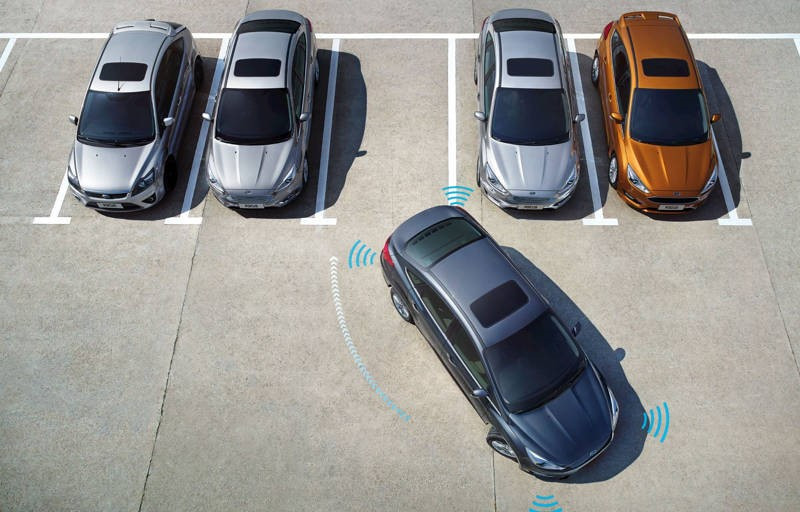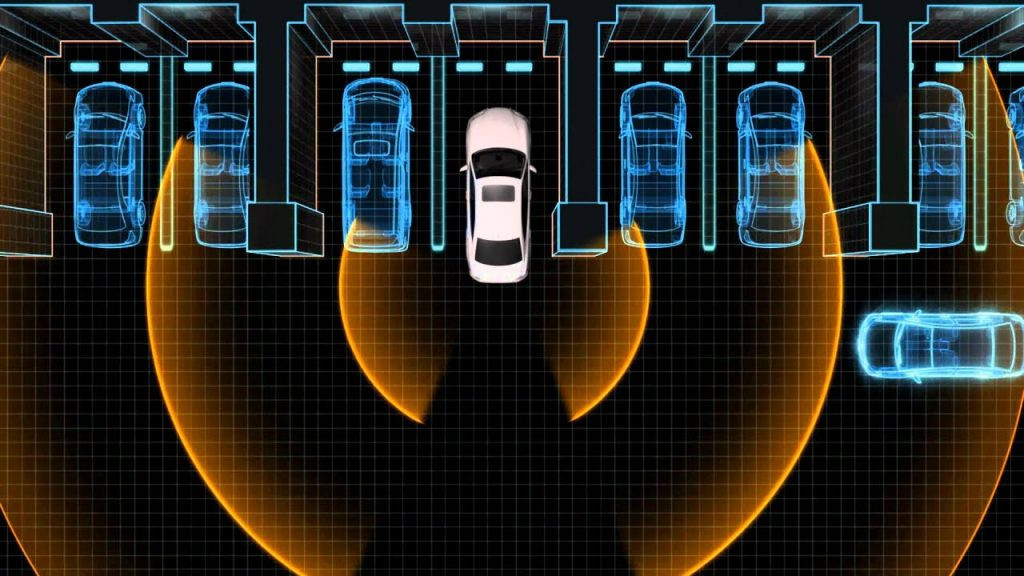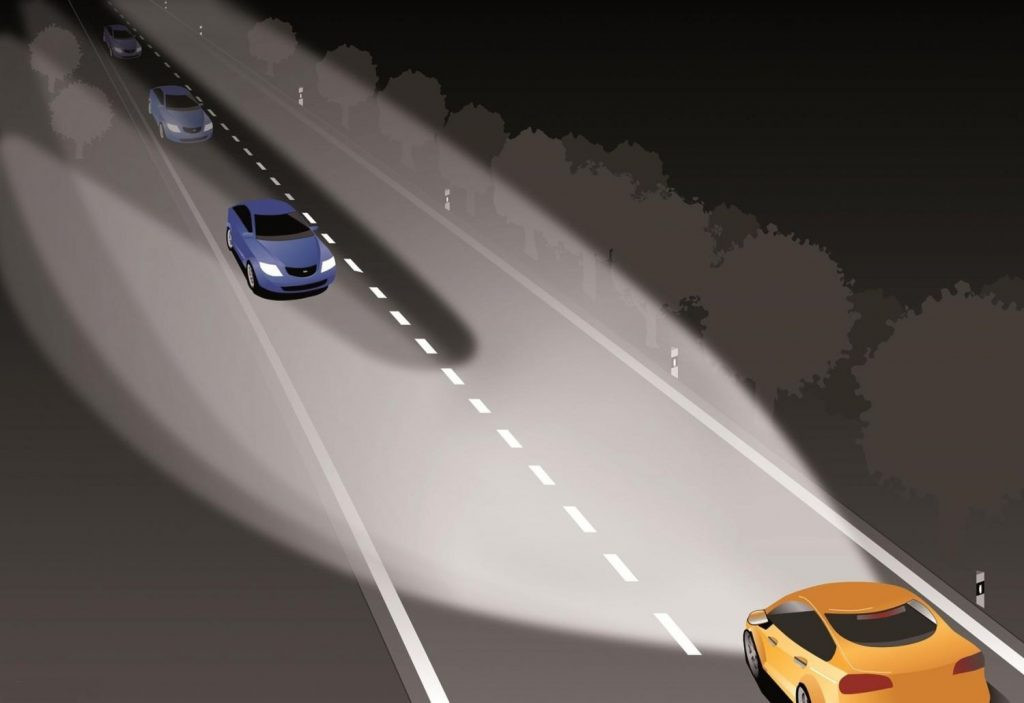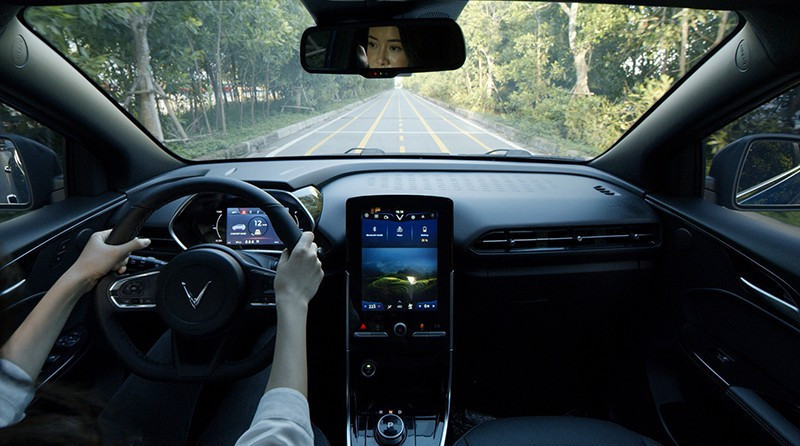Today's cars are increasingly integrating more smart technologies, available from popular car lines, helping people's lives become more convenient and safer.

Car technology today has developed very quickly, especially when looking back at what was equipped in cars just over a decade ago. Now, people are familiar with smart connections, from handheld devices, home appliances to virtual cyberspace, and gradually creating new travel trends.
In the context of increasingly fierce brand competition and especially the rise of electric cars, smart technology in cars is becoming more and more popular, even with popular car lines.
1. Self-parking
Self-parking without having to turn the steering wheel is a concept that Vietnamese people first knew about with the 2015 Ford Focus model, but it is only in the form of "support" and not fully automatic. When activated, the ultrasonic sensor system on the side, on the front and rear bumpers will "search" for gaps wide enough on both sides of the road for your car to parallel park or reverse. After finding a suitable location, the car will beep and instructions will be displayed on the screen, at which point the driver can take his hands off the steering wheel, but still have to operate the gear shift, use the accelerator and brake until the car is parked in position.
Up to now, the self-parking technology on Ford cars has become "smarter" and is easily seen in the Territory model. After pressing the automatic parking function button (P+Steering wheel icon) on the gear lever, the system will give 3 options: parking (parallel parking or perpendicular parking), leaving the parking space and automatically backing the car into the parking space. At this time, the driver does not have to touch any part of the car (steering wheel, gear lever, brake pedal, accelerator pedal), but the computer will completely operate according to the programming.
Besides Ford, currently in Vietnam, only luxury car manufacturers maintain the self-parking feature such as Lexus with the LS, RX, LX lines or Mercedes-Benz has Active Parking Assist right from the C-Class, E-Class lines.
2. Advanced driving assistance
ADAS (Advanced driver-assistance system) means Advanced Driver Assistance System, designed to support the driver to control the vehicle smoothly, proactively protect their own safety in case of loss of concentration or slow handling when unexpected situations occur. ADAS is currently a technology package that car manufacturers are competing to equip even on popular car lines instead of only for expensive cars as before.
Car manufacturers often give their own names to the ADAS systems they develop to impress users, such as Honda Sensing, Hyundai SmartSense, Toyota Safety Sense, Mazda i-ActivSense... but basically the driving assistance systems are all similar.

Currently, Vietnam has many car models under 1 billion VND equipped with ADAS such as: Hyundai Tucson, Mitsubishi Outlander, Toyota Corolla Cross, Kia Sportage, Hyundai Creta, Toyota Veloz Cross, Mazda2, Toyota Vios, Honda City, Honda HR-V,...
Normally, in ADAS there will be individual safety features such as: Forward collision warning, lane departure warning, blind spot detection, drowsy driver detection, hill descent control, night vision system, adaptive cruise control, automatic braking... And based on the equipment in the package to distinguish the ADAS level, a car with a higher ADAS level means it has more smart features and is equivalent to a high level of self-driving.
3. Smart adaptive headlights
For car drivers, the issue of whether to turn on high beams or low beams at night has become a frequent debate about awareness. Many drivers even do not know how to distinguish between high beams and low beams. This problem has been completely solved with cars equipped with intelligent adaptive headlights (Adaptive Headlights).
In conventional headlights, the light only shines straight ahead and when cornering, it cannot cover the entire field of vision, causing unsafety. But in smart headlights, LED technology is used and automatically changes direction according to the steering angle to provide a more realistic view. This technology is now popular on mid-range car models priced under 1 billion VND.

For some high-end cars, this system is designed more intelligently, by using many LED or Laser blocks that can be turned on and off independently, combined with a camera system to detect light sources in front of the car, thereby, the system will control and turn off light blocks that can affect the opposite vehicle. Thanks to that, the driver can use the headlights continuously, significantly improving visibility, without worrying about affecting the vehicles in front.
4. 360 degree camera
This is a feature that more than a decade ago, Vietnamese users had little access to because it only appeared on high-end car lines such as Land Rover, Lexus, BMW, Audi,... but now it has gradually become familiar even in popular cars or can be installed additionally.

As the name of this feature suggests, the viewing angle through the screen for the user becomes comprehensive with images of the front, back, and sides, and thus can observe the entire scene around the car in the most comprehensive way, eliminating hidden corners and blind spots. In particular, the 360-degree camera when combined with collision sensors will immediately warn on the screen with easy-to-understand graphics, helping the driver calculate a safe moving plan when going through narrow spaces, or reversing in a parking lot.
5. Virtual assistant
Nowadays, cars are no longer just a simple mechanical machine with an engine and drive system, but they have become more and more modern with the appearance of virtual assistant tools integrated into the car's computer.
Unlike virtual assistants such as smart homes, voice search or music, virtual assistants applied to cars are not simply search tools, but also a supercomputer that controls the entire operation of the luxury car in reality. It truly turns the car into more than just a “lifeless” vehicle, but has created close connections between the driver and the vehicle.
Vietnamese people are gradually becoming more familiar with virtual assistants as Vinfast switches to producing only electric cars from the end of 2022. Virtual assistants have appeared right from the cheapest car model, the e34. Users can communicate by voice, through virtual assistants to help adjust parameters on the car directly without having to operate through buttons on the center console as before, so the driver is not distracted, loses focus and increases safety.

Virtual assistants will even be upgraded to become smarter, moving towards being able to connect and control smart homes remotely or communicate with other vehicles on the road to create a smart and safe traffic network in the near future.
The virtual assistant will maximize the capabilities of artificial intelligence, helping drivers enjoy popular utilities such as: Controlling the vehicle's operating range, real-time navigation, finding suitable parking locations, locations of gas stations, charging stations, recording the user's schedule, suggesting suitable restaurants and hotels,...
HA (according to Vietnamnet)